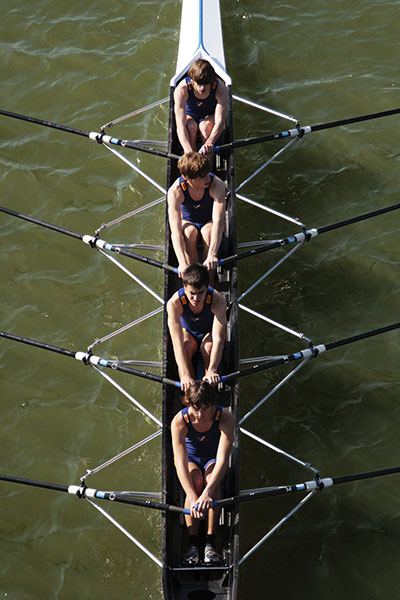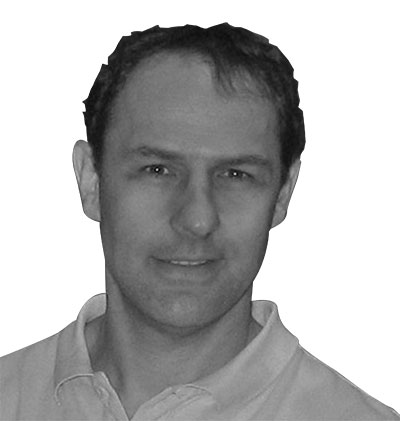
The bleachers and box suites at major games are occupied by thousands of enthusiastic and excited spectators.
The bleachers and box suites at major games are occupied by thousands of enthusiastic and excited spectators. Those fun-filled moments are the realization of a process, the evolution of a final product, so to speak. Athletes have spent countless hours honing their skills for the competition. Likewise, for every group of fans taking in the sights and sounds of the spectacle, there is a large number of people who have helped organize the occasion and support it while it is happening.
 |
|
| Major sporting events employ a team of multidisciplinary health-care practitioners supporting the athletes. Photo:Dreamstime.com Advertisement
|
It could be argued that a major game resembles a large rock band concert, but on a far grander scale. At such an event there are travel consultants and equipment movers. Often, construction is involved, and stage managers, medical people, officials and volunteers are present.
The Pan Am and Parapan Am Games coming to Toronto in 2015 will be such an event – perhaps second in size only to the Summer Olympics. In fact, sport venues stretch across Ontario’s Golden Horseshoe, from Welland to Oshawa and from the downtown Toronto area up to Lake Simcoe.
The Pan Am Games, to be held July 10 to 26, 2015, and the Parapan Am Games, to be held Aug. 7 to 14, 2015, will include countries from North, Central and South America, as well as the Caribbean. Some 41 national teams, totalling close to 7,000 athletes, will be participating. Competitors will represent their countries in 36 sports and 15 sports in the Pan Am and Parapan Am Games, respectively. Around 20,000 volunteers are needed to make these events a seamless and outstanding success.
An event of this magnitude requires medical personnel of all stripes: emergency medical personnel, chiropractors, athletic therapists, massage therapists with a sport massage background, sport physiotherapists, sport physicians and orthopedic surgeons.
Prior to participation, all must receive accreditation, which often involves a police check to determine that the prospective participant does not have a criminal record.
Participants are briefed on a number of topics, some obvious and others less typical. Athletes must be aware of cultural considerations with different athletes, health issues with participants (think Special Olympics, where participants have special needs), and, depending upon the sport, equipment issues (such as those with wheelchairs and helmets, for example). Co-operation protocols for different professionals must be established so everyone knows what his or her role is in the team.
Participants in medical teams have indicated that at special events recognition of and respect for the skills of different professionals is far better than in the regular medical system. It is a common lament that, if only the daily medical system mirrored sporting events, patients would have superior and faster medical care.
Preparing medical coverage is multifaceted. The logistics of various locations are important. Depending on the size of the contingent competing at a location, more personnel could be required. Who staffs a given location also depends on how far it is from a major hospital and what events are taking place. Motor cross and skiing events may be taking place farther from a major hospital and might need a more comprehensive medical presence compared to, say, track and field events. Injuries are more likely to occur with certain sports; professionals trained in emergency care will be more of a presence in events with higher risks of injury, such as rugby. On the other hand, certain events are more likely to require massage, such as swimming. Hence, the profile of the medical professionals present depends on the sport and the location.
Larger foreign teams do come with their own medical team. The insurance of their medical staff indicates they may work with their own athletes even though they are in Canada, where their insurance usually does not apply. The corollary is that the Canadian host medical team may work with all athletes – foreign and Canadian – so long as contact occurs in Canada. Foreign medical doctors may assess their own athletes and suggest treatment or medication, but their Canadian counterparts will then have to prescribe the appropriate medication.
Frequently, when a variety of languages are spoken, translation services will be required as well. The Pan Am Games will most likely have English as a predominant language. However, French and Spanish will also be official languages of the event. Volunteers are asked, if possible, to brush up on their Spanish and French.
Medical personnel at major games can be divided into three groups. Individual teams from all countries, including Canada, may have their own dedicated team therapist. This is usually someone who is very familiar with the sport and who has worked extensively with the team previously. Often, that therapist has been an athlete in that particular sport.
Large foreign contingents will also have a core medical team which serves their athletes in general. There is also a host medical team provided by the home country, which is usually based somewhere central as well as in satellite clinics close to event locations. The host medical team serves all athletes – the host country’s athletes, as well as foreign athletes. Smaller foreign contingents with little or no medical staff of their own will rely more heavily on the host country’s medical team.
Head therapists and physicians often have a cellphone dedicated to the event, enabling other staff to reach them at all times. In truth, nowadays it is realistic that everyone on the medical team will be equipped with a mobile communication device such as a cellphone. Health forms, record keeping and consent protocols must be organized. An emergency action plan must be established with all involved personnel knowing exactly what to do in this eventuality. Equipment (stretchers, spinal boards, treatment tables, modalities) and supplies (tape, tensors, ice), as well as sanitizers for the equipment and hands, must be available and paid for – hence the value of sponsors. If concussions are likely in the sport, SCAT forms (sport concussion assessment tools) must be available.
Aside from the resumé-building and networking opportunities, being part of such an event is as exciting as it is rewarding. An international sporting event, such as the Pan Am Games, comes only rarely to Toronto. This is an opportunity to be embraced.
Chiropractors and other sport medicine practitioners interested in participating in a sport event should start getting involved through their neighbourhood sport events. They will gain experience in sport medicine, make contacts and improve their skills.
 |
|
Jonathan Maister is a Canadian trained athletic therapist, massage therapist and sport massage therapist. He has lectured on a number of sport massage and sport medicine topics across Canada. He can be contacted at mr.j.tor.can@sympatico.ca or 905-477-8900.
Print this page